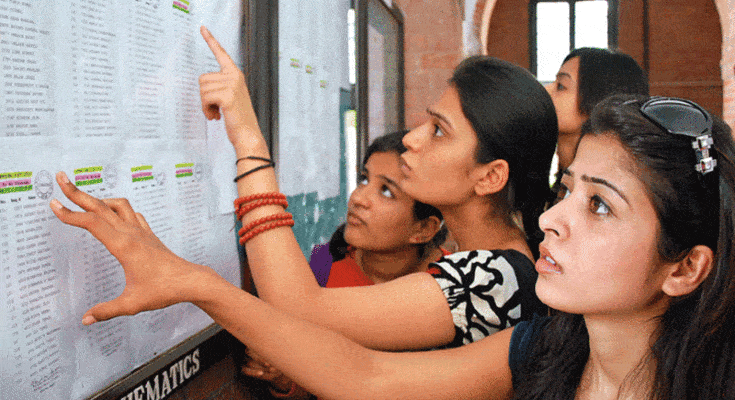Dance through time has remained to be a form of expression around the world. And like any kind of art, it too has evolved and changed with passing trends and influences. Dance forms reflect various aspects of the society, and their timeline through the ages is corroborated by its evolution.
- The Roaring 20s
The 1920s, famously known as the Roaring Twenties, were a time of economic prosperity, especially in the western society. This decade was also known as the “années folles” or the ‘crazy years’, emphasizing the era’s social, artistic, and cultural dynamism.
This era is defined by dances like the Lindy Hop, Foxtrot, Waltz, the Shimmy, and the Charleston.
- The Threadbare Thirties
The 1930s, famously known as the Threadbare Thirties, was a period defined by political and economic crises worldwide, including the Great Depression, which would eventually result in the Second World War in the coming decade.
This era is defined by dances like the Hop, Jitterbug, and the Jive. It also saw the popularization of exotic dance forms of Latin America like the Samba, Conga, and the Rumba.
- The Fightin’ Forties
The 1940s, also known as the Fightin’ Forties, is an era defined majorly by the wars that took up most of this time period. The Second World War took up the majority of this era’s first half, followed by a war-weary Europe being led towards the starting of the West’s Cold War while the East saw the liberation of various nation-states that were under the western allies. Despite the war-stricken nature of this era, people found comfort in music and dance, and the activity continued to flourish.
This era is defined by the popularity of jazz, and a blend of jazz dances were popular in this era, like the Cakewalk and the Charleston, Black Bottom, Susie Q, the Shake Blues and the Gutbucket Blues, the Trunky Doo, and the Big Apple.
- The Fabulous Fifties
The 1950s, also known as the Fabulous Fifties, is defined as an era of growth and rebellion. Though the world hadn’t completely come out of political struggle, with the Korean War and the Vietnam War still raging, major dances evolved from movies like “Grease” and “Hairspray”.
This era is defined by the popularity of the iconic Rock n Roll era, as well as other dances like the Boogie Woogie, the bop, and the Chalypso.
- The Swingin’ Sixties
The 1960s, also known as the Swingin’ Sixties, is an era defined by a revolution in social norms regarding clothing, sex, drugs, sexualities, and formalities. This era is also defined as one of irresponsible excess, flamboyance, and decay of social order. The Sixties saw a fall or relaxation of social taboos.
Artists like “The Beatles” had a huge impact on the dance trends of this era, and the 1940s saw the introduction of over 400 dances. Some of these include- the Fly, the Mashed Potato, the Twist, and the Funky Chicken.
- Synthpop Disco Seventies
The 1970s saw a rapidly emerging urban nightlife scene. It can be seen as a reaction by the 1960’s counterculture. Disco-goers often were associated with expensive, extravagant and sexy fashion. There was also a thriving drug subculture in the disco scene and clubs were also associated with promiscuity. Disco started as a mixture of music from venues popular with African Americans, Hispanic and Latino Americans, Italian Americans, and LGBT people in Philadelphia and New York City.
Several dance styles were developed during the period of disco’s popularity in the United States, including “the Bump” and “the Hustle”. Well-known disco artists include Donna Summer, Gloria Gaynor, and the Bee Gees, while films like Saturday Night Fever (1977) and Thank God It’s Friday (1978) contributed to disco’s mainstream popularity.
- The Rockin’ Eighties
The eighties saw great advancement in technology and
The Eighties were heavily influenced by rock music, as well as breakdancing. It was also the year of punk and heavy metal such as moshing- jumping around to the sounds of loud heavy metal music. Moshing, Jacking, and Voguing are iconic styles that came out of this dance era. Many styles from this era have been changed to fit the current music, for example mosh pits at EDM concerts.
Even though break dancing was such a big thing, A famous dance film in the 1980s was “Dirty Dancing” which featured a dance style called lambada. Lambada, a dance with long-standing Brazilian roots, was a very sensual dance, even though it was very fast paced.
- The Hip Nineties
The 1990s was the era of hip hop, which has influenced our dance culture today. Hip hop and rap culture saw an immense growth and gave rise to the baggy jeans, loose shirt and backwards cap hip hop look. Artists like Tupac Shakur, Jay Z, and Ice Cube shaped the youth culture worldwide.The 1990s had dances from the tootsie roll, the running man, to the macarena that still are popular.
Zumba, an exercise dance, also gained mass popularity in the 1990s. This dance combines aerobic movements, and salsa dance and has now become a staple exercise worldwide to help build strength and improve movement.
- The Trendy 2000s
The 2000s saw the advent of the internet and artists like Brittany Spears, N’Sync, Beyonce and Ciara changing the music and dance scene wave with their hit singles and rocking dance moves.
The 2000’s were also characterized by the ever-increasing interest in electronic music. Street Dance styles like Krumping became popular. It saw a blend of y different types of dance such as hip hop, vogue, and disco. The popularisation of videos due to YouTube also made movies to songs iconic and heavily replicated, such as Beyonce’s Single Ladies, Soulja Boy’s Crank That and Young B’s Chicken Noodle Soup.
- Viral Dances of Today:
Gangnam Style: originating from the popular kpop song, Gangnam Style, by PSY, it became popular in 2012- Its music video was the most watched video on Youtube until Despacito came along. The dance consists of several moves done in the video and still remains iconic.
The Floss: The floss dance became famous when a 16-year-old kid, Russell Horning, who became famously known as The Backpack Kid, started posting videos of himself doing this strange dance. The dance soon became viral, and Horning gained a massive following- even performed his dance on Saturday Night Live to Katy Perry’s song “Swish” and had the dance be included in one of Fortnite’s moves.
The Tiktok Savage Dance: with the advent of quick content consumption apps like Tiktok, dances like the Savage dance and the Renegade have become viral. ticktokers have a 15 second sassy routine to the tunes of Savage by Megan Thee Stallion.
Feature Image Credits: Buzzfeed
Shreya Juyal
[email protected]
Satviki Sanjay
[email protected]







